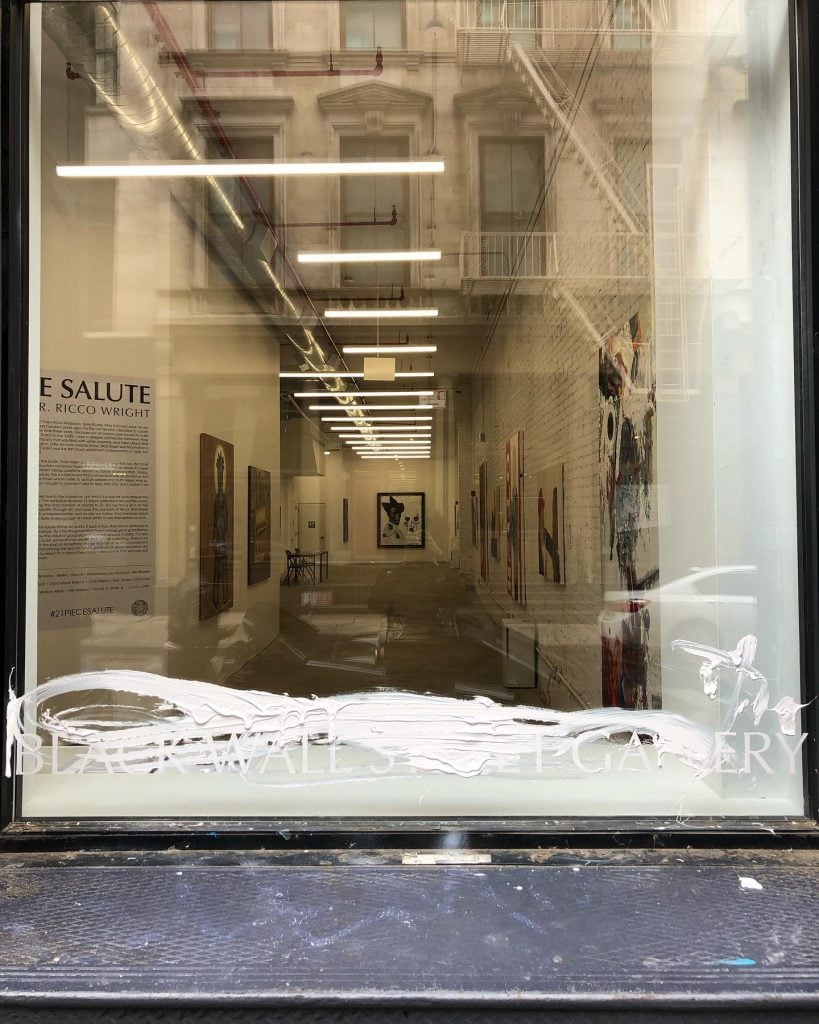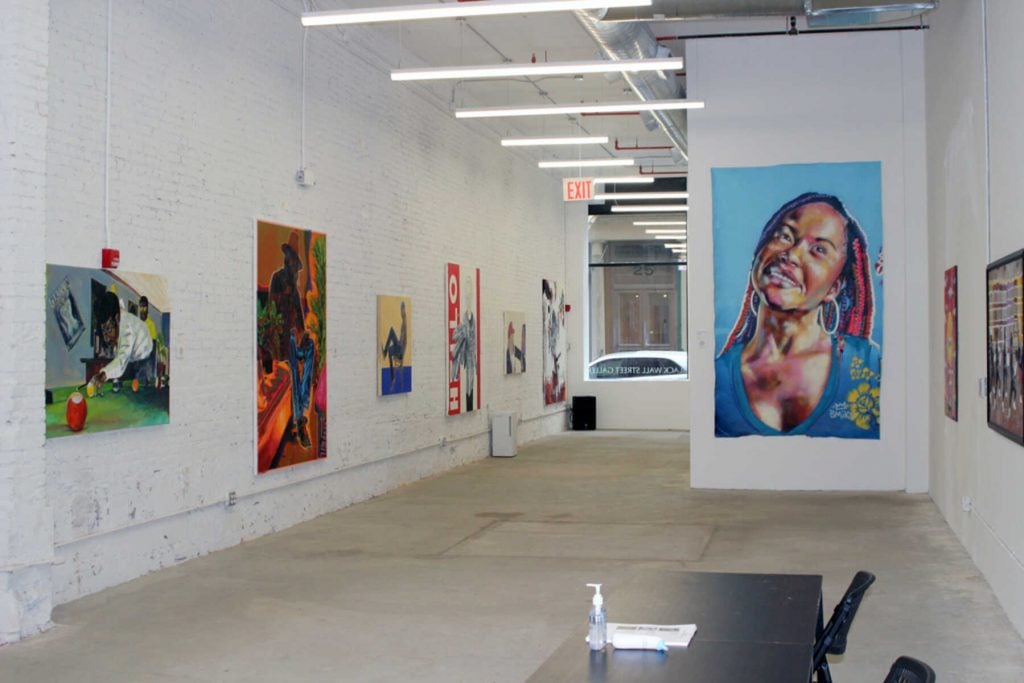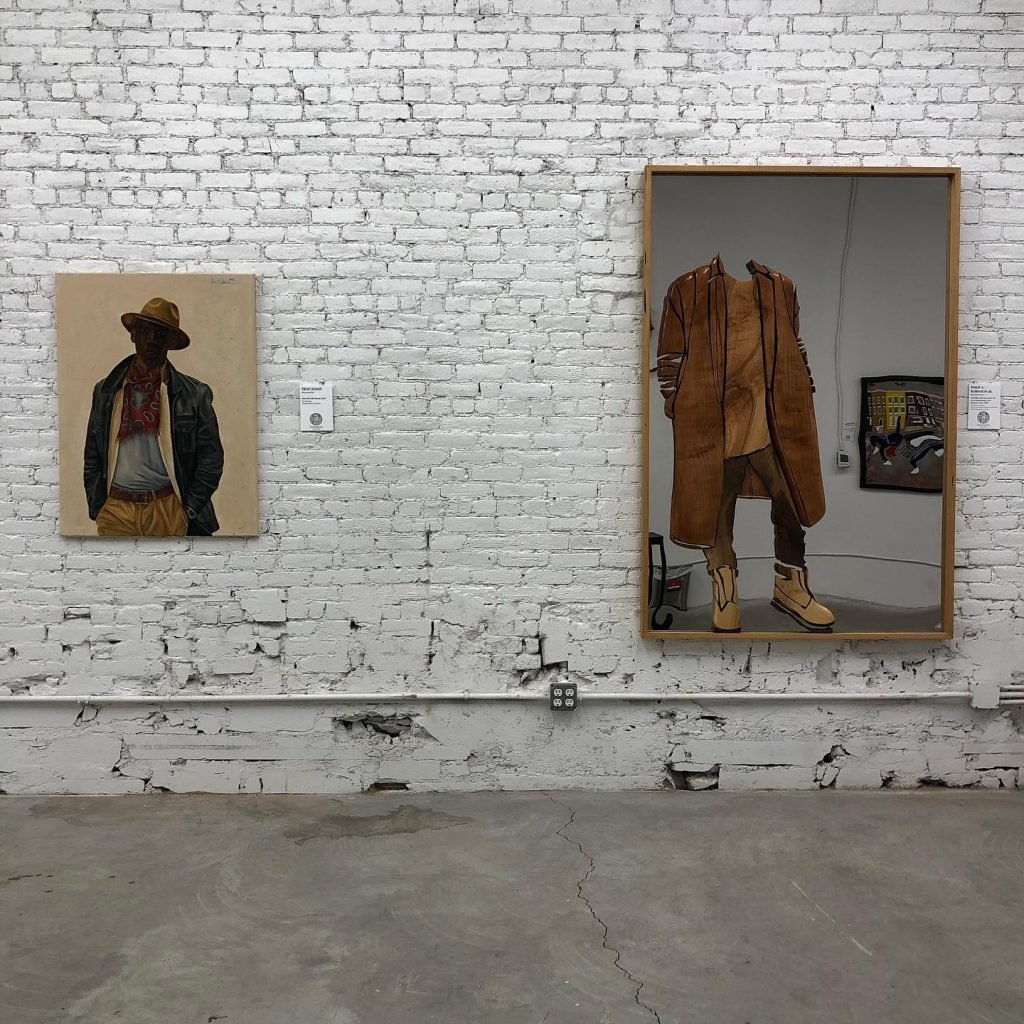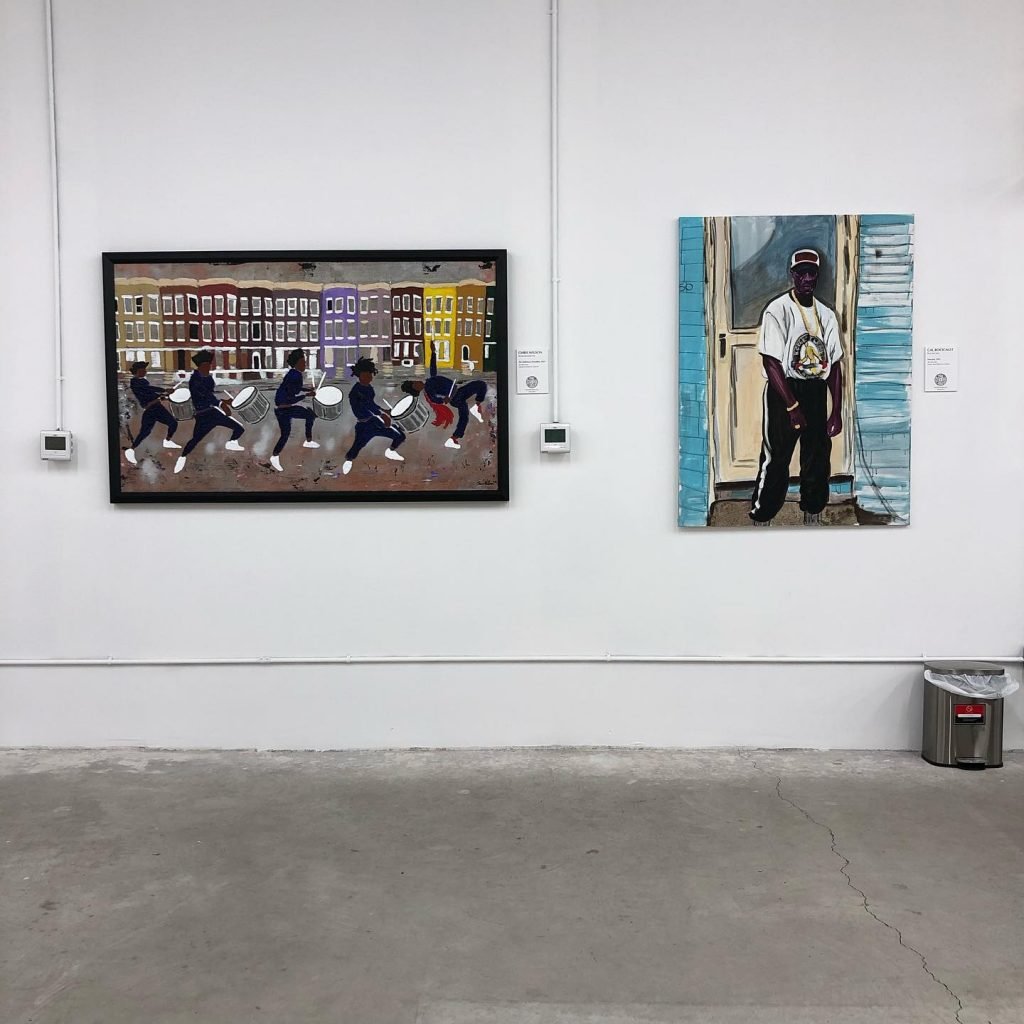Crime
Vandals Used White Paint to Deface New York’s Black Wall Street Gallery on the 100th Anniversary of the Tulsa Race Massacre
The gallery was originally founded in Tulsa, and opened its SoHo outpost in October.

The gallery was originally founded in Tulsa, and opened its SoHo outpost in October.

Sarah Cascone

Monday was the 100th anniversary of the Tulsa Race Massacre, in which white mobs burned the city’s prosperous Greenwood neighborhood, known as Black Wall Street, to the ground, killing as many as 300 African Americans.
When Ricco Wright, owner of New York’s Black Wall Street Gallery, arrived for work that day, he was disturbed to discover that vandals had covered a sign for his business with white paint. The incident took place between 11 p.m. Sunday and 7 a.m. Monday, according to CBS.
“We’ve called the police and they claimed that this isn’t hate speech despite the fact that this occurred on the centennial anniversary of the 1921 Tulsa Race Massacre,” the gallery wrote on Facebook and Instagram on Monday. “As far as we’re concerned, smearing white paint on the word ‘Black’ is deliberate and intentional and therefore constitutes hate speech.”
The Hate Crime Task Force was notified of the incident, Detective Denise Moroney, a New York City Police Department spokesperson, told NPR. So far, there have been no arrests. The NYPD did not respond to inquiries from Artnet News.

“21 Piece Salute” at Black Wall Street Gallery. Photo courtesy of Black Wall Street Gallery.
“We can’t be shocked nor surprised that racism that still exists,” Wright told Artnet News. “It’s curious, but I’m happy the person did it because it really helped to illuminate the problem. And it also put a spotlight on the gallery. We represent something that’s bigger than us and is very important.”
Wright, a fourth-generation Tulsan whose great grandfather survived the massacre, opened the gallery in October as a SoHo outpost of his original location in Greenwood, which recently closed. The business had operated without incident until this week, on the occasion of the anniversary.
Wright found additional vandalism on the property Tuesday morning, and received a call from the police after midnight on Wednesday after a patrol unit found a cryptic note hung on the gallery door, reading “ect” and “real art.”
Wright plans to leave the paint on the gallery as is, adding a new sign on top of the defacing marks.
“We want people to see it. You can’t erase history,” he said. “These are moments when the community comes together too though. I think there’s always a silver lining.”

“21 Piece Salute” at Black Wall Street Gallery. Photo courtesy of Black Wall Street Gallery.
To commemorate the Tulsa tragedy of 100 years ago, the gallery’s current exhibition, “21 Piece Salute,” brings together work by 21 Black artists “honoring those who lost their lives and livelihoods in the 1921 Tulsa Race Massacre and celebrating Black entrepreneurship as we look toward the next 100 years,” according to the gallery.
“People need to see this exhibition. It speaks to why this hate crime even occurred,” Wright said. “It’s a powerful show and it’s very important in the art canon.”
In Tulsa, there have been numerous events and projects acknowledging the massacre’s centenary—a sharp contrast to the event’s erasure from history in the decades that followed. Even in Oklahoma, the massacre wasn’t a mandatory part of public school curriculums until 2019.
“There are a lot of white people who were really upset that they didn’t know about the massacres. No one ever told them about this history—this American history—and this is an opportunity for them to learn more,” Wright added.

“21 Piece Salute” at Black Wall Street Gallery. Photo courtesy of Black Wall Street Gallery.
The show also looks to educate viewers about Black history in New York. From 1643 to 1716, the area that is now SoHo was called the Land of the Blacks, thought to be the continent’s first free African settlement. At the same time, and the city’s commerce was dependent on the slave trade, with Wall Street being home to New York’s first slave market, founded in 1711.
To illuminate that local history and connect it to the tragic events of Tulsa in 1921, the gallery staged a procession to the nearby African Burial Ground National Monument on Monday evening.
“A lot of people didn’t know that there are remains of African slaves right there at 290 Broadway,” Wright said. “It’s pretty heavy, but this is what we have to deal with as Americans. We have to come to terms with this dark past—but we can do this in solidarity.”
“21 Piece Salute” is on view at Black Wall Street Gallery, 26 Mercer Street, New York, May 27–June 19, 2021.